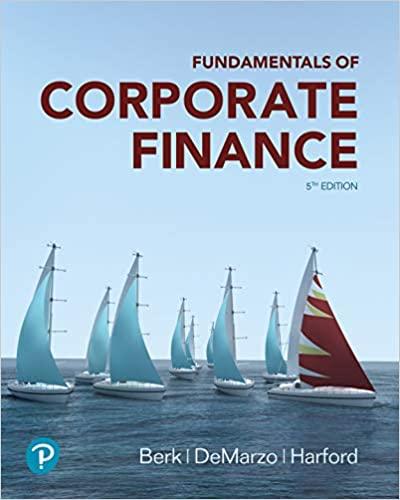Question
Stock: Terreno Realty Corporation (TRNO) Rd=2.40% (cost of debt) Re=4.41% (cost of equity) WACC=3.94% This is the full question, I only need part 3 two-stage
Stock: Terreno Realty Corporation (TRNO)
Rd=2.40% (cost of debt) Re=4.41% (cost of equity) WACC=3.94%
This is the full question, I only need part 3 two-stage FCFE:
Using the cost of equity, cost of debt, and WACC you computed in PHASE I, compute absolute valuation measures for the value of your stock. You must complete all four valuation measures. You may adjust your estimates of re, rd, and WACC if you find that a different estimate makes sense. However, you must use the same cost of equity for all four calculations (cost of equity is the same no matter which valuation model is used). 1. DDM: Compute the DDM estimated value using your estimate of r from PHASE I and your estimate of g. Also, produce a Sensitivity Analysis Table like the one in my lecture notes. Show the stock price for small changes in g and r. Also, use the current stock price and your estimate of r to compute the implied growth rate for you stock. 2. Two-stage DDM: Use your estimate of short-term and long-term growth in dividends to value the stock. Explain how you came up with the estimates of g. If your stock does not pay dividends, use one of the models from the textbook for computing DDM on non-dividend stocks. 3. Two-stage FCFE: Use your estimates of short-term and long-term growth in free cash flow to value the stock. Explain how you came up with the estimates of g. While it is possible to use different growth rates for FCFE and DDM, for most companies both dividends and free cash flow to equity grow at the same rate in the long run. 4. Two-stage FCFF. For 2-stage FCFF, use the WACC as your cost of capital and estimate the short- term and long-term values of g for the cash flows to the firm. Compute both the value of the entire firm as well as the value of equity using this model (subtract the value of debt from the value of the firm to get the value of equity). Note that your estimates of g for the FCFF calculation must be lower than g for FCFE and DDM (because of leverage).
Step by Step Solution
There are 3 Steps involved in it
Step: 1

Get Instant Access to Expert-Tailored Solutions
See step-by-step solutions with expert insights and AI powered tools for academic success
Step: 2

Step: 3

Ace Your Homework with AI
Get the answers you need in no time with our AI-driven, step-by-step assistance
Get Started


